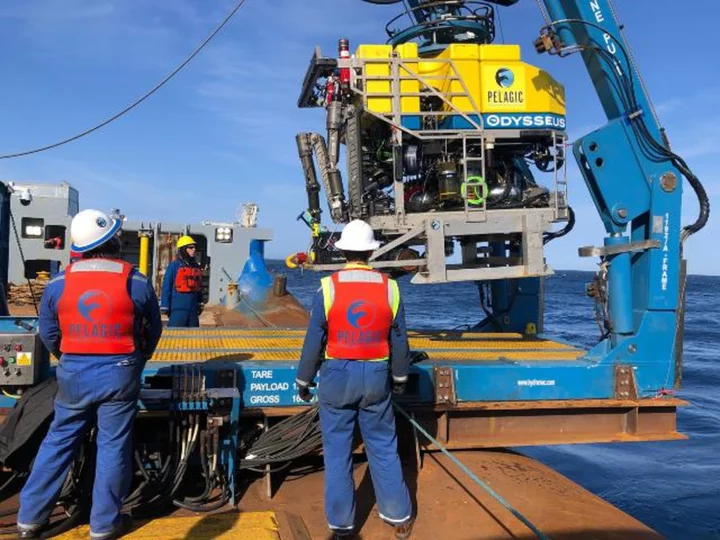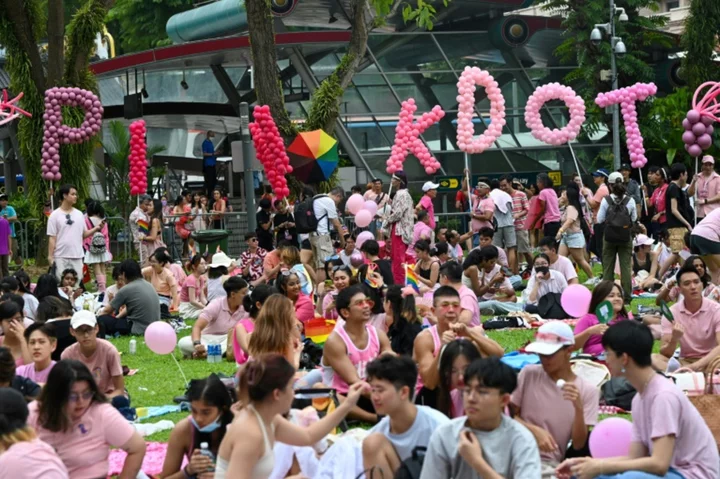MANILA, Philippines (AP) — Filipino forces would dismantle any floating barrier that China’s coast guard may install in the disputed South China Sea, a Philippine admiral said Wednesday after Manila infuriated China by removing one such obstruction in a contested shoal.
Philippine officials strongly condemned the installation last week of a 300-meter (980-foot) -long barrier by Chinese coast guard vessels at the entrance to the lagoon of Scarborough Shoal as a violation of international law and the country’s sovereignty.
The barrier has prevented a swarm of Filipino boats from entering the rich fishing area, they said. The shoal lies within the Philippines' exclusive economic zone just west of the main Luzon Island, but has been occupied by China since 2012 as part of a push by Beijing to lay claim to virtually the entire South China Sea.
On Monday, the Philippine coast guard said it has complied with an order by President Ferdinand Marcos Jr. to launch a covert operation to remove the rope and net barrier held up by small buoys in the mouth of the shoal. China reacted on Tuesday by asking the Philippines “not to make provocations or seek trouble."
“Huayang Island is China’s inherent territory,” Chinese Foreign Ministry spokesperson Wang Wenbin said in a news briefing in Beijing on Wednesday, referring to the Chinese name for Scarborough.
“What the Philippines (has) done is nothing but a farce that entertains itself. China will continue to safeguard territorial sovereignty and maritime rights and interests of Huangyan Island.”
Philippine Vice Adm. Alberto Carlos, who heads the military’s Western Command in charge of overseeing the South China Sea, told journalists he was concerned that the Chinese coast guard may also install a similar floating barrier at the entrance to Second Thomas Shoal, which is occupied by a small Philippine navy contingent on a long-grounded warship but has been surrounded by Chinese coast guard ships.
“My concern is, if they also put a barrier in Ayungin … we also have to remove the barrier,” Carlos told journalists, using the Philippine name for Second Thomas Shoal. “Whatever they install, we will remove.”
Under Marcos, who took office last year, the Philippines has intensified efforts to fight China’s increasingly aggressive actions in one of the world’s most hotly contested waters. The Philippine coast guard now often invites journalists to join its territorial patrols in an effort, it says, to expose China’s bullying in the busy waterway.
Aside from China and the Philippines, Vietnam, Malaysia, Brunei and Taiwan are also involved in the long-simmering territorial conflicts in the South China Sea. They which have long been regarded as a potential Asian flashpoint and a delicate fault line in the U.S.-China rivalry in the region.
Washington lays no claim to the sea passageway, a major global trade route, but U.S. Navy ships and fighter jets have carried out patrols for decades to challenge China’s expansive claims and promote freedom of navigation and overflight. China has told the U.S. to stop meddling in what it says is a purely Asian dispute.
Carlos said the Philippine military would comply with Marcos’s order to ensure that the marooned and crumbling navy ship, which Filipino forces use as a territorial outpost at Second Thomas Shoal “should remain there, strong enough to be able to fly the Philippine flag."
China has asked the Philippines to tow away the ship from the shoal. But Marcos and the Philippine military have insisted the offshore region lies in their country’s exclusive economic zone.
Chinese coast guard ships have repeatedly tried to block Philippine resupply vessels, resulting in near-collisions.
Washington has said it’s obligated to defend the Philippines, its oldest treaty ally in Asia, if Filipino forces, ships and aircraft come under attack, including in the South China Sea.









